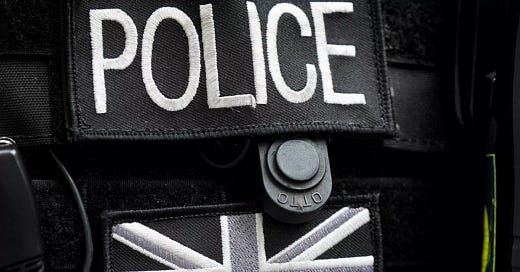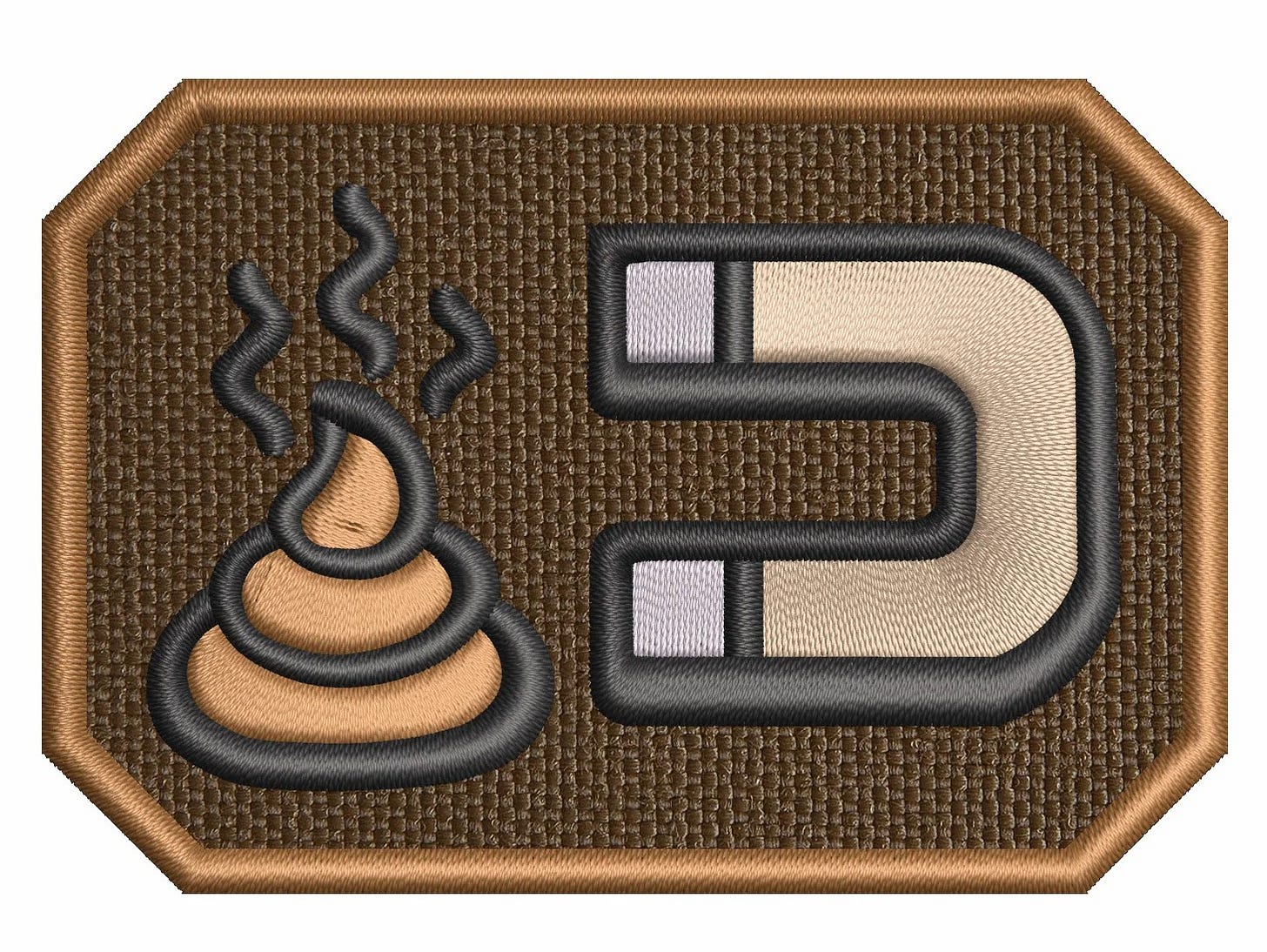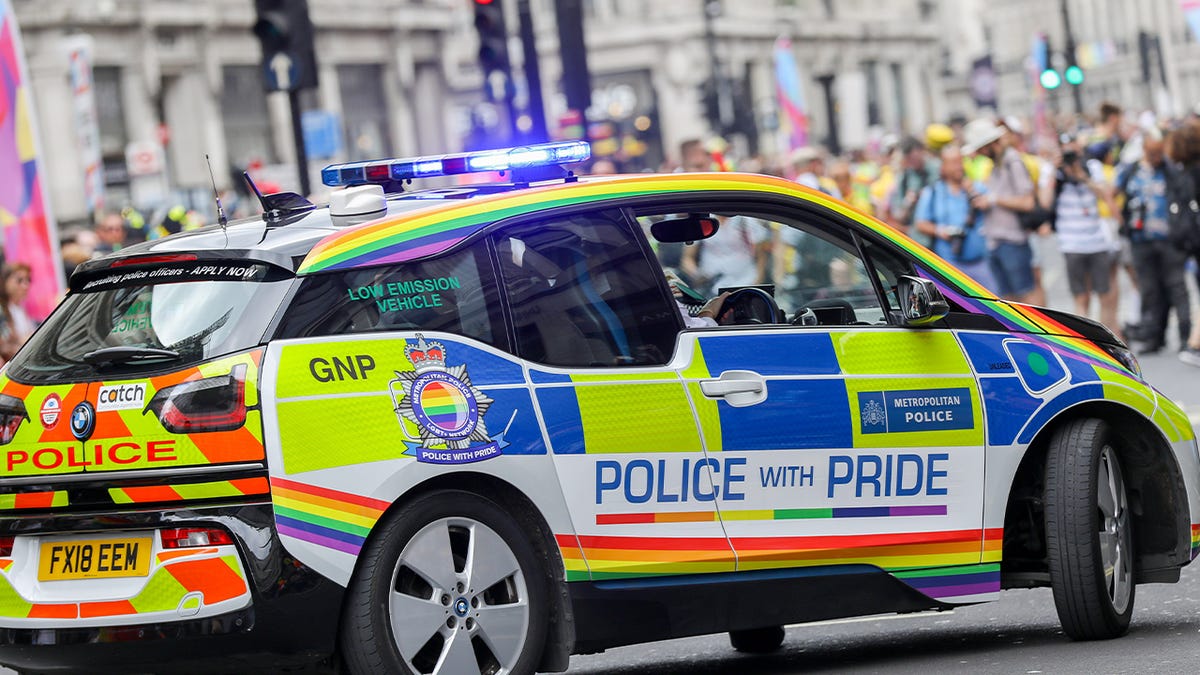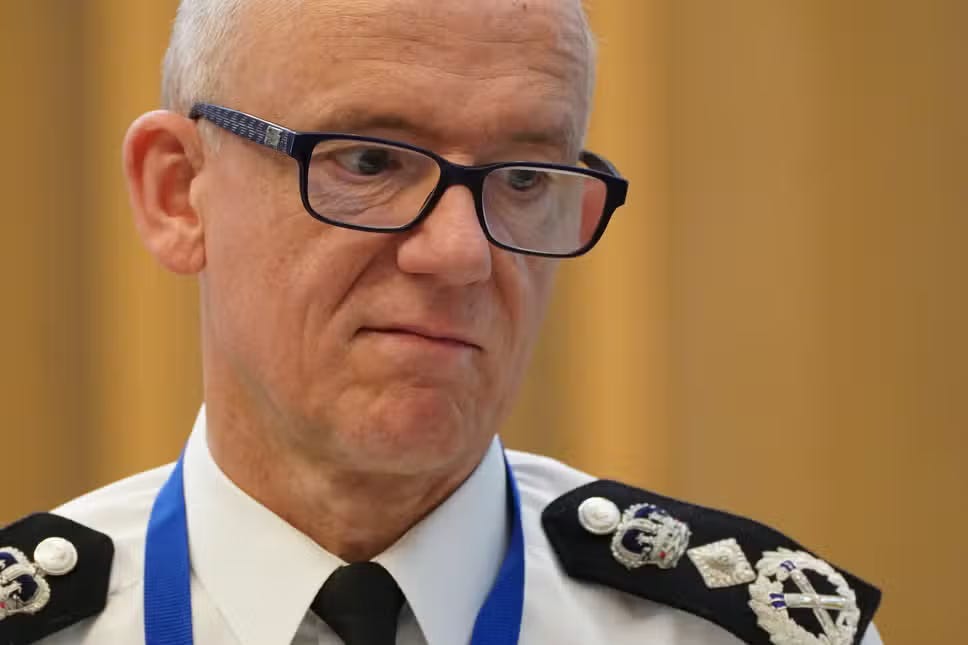The Morale Patch - a small symbol of a big problem
Today, I’m discussing a 3-inch wide piece of rubber-backed fabric. It’s a seemingly trivial issue that, for Met Commissioner Sir Mark Rowley, isn’t actually trivial at all. It’s a story where the senior leadership of the Metropolitan Police Service proved themselves incapable of reading the room. That’s hardly surprising, yet revealing all the same.
Bubbling under all of this is something much, much deeper. It’s about progressive politics in the police, and the gap between the decision-making elites and the less identity-obsessed who make up the majority of frontline officers. You see, protected characteristics don’t matter when a criminal shoves a shotgun in your face. And, I think, the divide between the people who take those risks and those who don’t is becoming unbridgeable. Has identity activism within policing - once a noble attempt to tackle discrimination - mutated into an impediment for those making up the Thin Blue Line?
You can read yourself into the story here, whereby Sir Mark decided to support a ban on police officers wearing the ‘Thin Blue Line’ morale patch on their stab vests. Of course, I contrast this with the preponderance of Pride-themed uniform items worn by UK police, with the full blessing of senior management. Incidentally, it isn’t Pride that bothers me, it’s the double standard. That and the insensitivity shown by the Met’s Management Board towards its officers. You see, it was the Met’s senior officers who initially summoned the identity politics genie from its bottle. And now, dammit, it won’t go back in.
But first, a history lesson and some Fun Facts™, because context matters. Morale patches are called morale patches for a reason. These pieces of plastic and Velcro have, too often, been covered in blood.
The modern morale patch originates from the US military*. With the advent of MOLLE, manufacturers began covering body armour, bags and other load-carrying equipment with Velcro. The idea was troops could easily slap important badges onto their kit (which is why morale patches are sometimes known as ‘slaps’) without the need for sewing. Blood group markers, rank, trade specialisation and unit designation insignia are obvious examples. It also helped GIs spot their rucksacks among the dozens of other rucksacks in the back of a C-17. Then, soldiers being soldiers, stuff like this appeared:
The ‘Shit Magnet’ patch, which I fixed to my laptop bag when I was a source handler (IYKYK)
Like Vietnam before it, the controversial ‘Forever Wars’ in Iraq and Afghanistan between 2001-2014 (for the UK) spawned a subculture of dark, nihilistic and politically incorrect humour. And, in the field, the shot-at and IED-targeted squaddie or GI let off steam partially by covering his or her kit in sardonic morale patches. Combat leaders decided, given the stakes, to relax uniform standards in the field in the interests of… morale.
The people who do the work, and take most of the risks, have an unwritten compact with those who don’t (and especially those in the chain of command), which is this: we know there’s a line. We know this is a disciplined service. But we put up with the shit you don’t, so cut us some slack. Turn a blind eye. Just enjoy your air-conditioning and PowerPoints and freshly-brewed coffee.
It’s grunt philosophy. Grunt, by the way, isn’t a pejorative term. It’s a badge of honour. One of the UK policing’s last saving graces - sadly gone - was everyone spent two years as a grunt. Of course, I’m not making a comparison between the risks faced by frontline soldiers in hot, sandy places and UK coppers.
Nonetheless, some of the philosophy maps across. And, in the UK police service, many uniformed officers are grunts. The response and support group officers. Dog handlers and firearms operatives. Traffic cops and neighbourhood beat cops. These are the people shouldering the vast majority of physical risk.
And they are a thin blue line, as anyone who’s seen an inner-city response team parade for night duty will tell you. It’s shitty, messy, violent, often boring and mentally demanding work.
And, occasionally, these officers die performing their duty.
Sometimes - thankfully rarely - they’re killed by criminals. Or in accidents. Or they’re seriously injured. Or they die by their own hand - an old colleague took his life last week. There’s a small army of mental health casualties. Nobody in the Media gives much of a toss unless there’s something especially titillating or sensational about the circumstances. The Media are more interested in negative stories, which generate more click-through advertising revenue than hearing about PC Miggins taking a proper kicking protecting people from thugs or drunks on a Friday night.
The people who do care are the organisations loosely referred to as the ‘Police Family’, which includes the charity ‘Care of Police Survivors’ (COPS), established in 2003. COPS looks after the people the British public don’t really think about. They do important work. They are much-respected and loved by police officers. And they adopted the ‘Thin Blue Line’ logo as their own. As part of their fundraising, they sell TBL morale patches.
I’m buying a dozen tomorrow. Please join me.
COPS is mainstream and decent. The Chair of Trustees is Sir Peter Fahy QPM, a former Chief Constable and a man of impeccably liberal credentials. The idea COPS would choose to sell a morale patch ‘linked to the Far-Right in America’ is offensive bullshit.
Maybe political pressure will force them to change it. I hope not. My message? Dig in. Fix bayonets. Then again, I’m of the view too many people nowadays, especially the perpetually offended, waste an inordinate amount of time on the internet obsessing over American parapolitics. I would gently remind them to (a) put their phones down and (b) London isn’t a suburb of New York, LA or Washington DC.
COPS have made the TBL patch their own. I don’t care if it reminds someone of something a dribbling lunatic of a militiaman in the US might have created three years ago. It’s palpably different. It’s a blue line on a subdued Union flag. Our flag. A flag, incidentally, I’m unfashionably proud of.
In short, get over it.
The idea that policing never wears its heart on its sleeve went out of the window some time ago. ‘Without Fear or Favour’ was abandoned in the name of virtue (signalling)
I’ve been reading about this affair and comparing it with my own experience of how the Met Machine thinks when faced with a tricky dilemma. Here’s what I’ve discovered;
Before London Pride 2023, the Commander in charge of the event (usually referred to as ‘Gold’) issued an order that TBL patches were not to be worn, because: These have been linked to far-right and anti-trans groups in the US and this year’s Pride is focusing very much on the trans community. This is non-negotiable and supervisors are expected to ensure this is adhered to please.
The idiocy of this decision is immediately apparent - can someone please show me an American anti-trans nutter wearing a Union flag? Presumably, someone looking to score points with the boss mentioned the TBL patch was dodgy (even if that was only in their own bizarre, internet-addled unreality). The Commander immediately became more sensitive than someone undergoing root canal treatment without anesthetic. They also, maybe (just maybe) thought they could use the decision as an example of their politically correct credentials at a future promotion board. If you don’t believe this is how some of these people think, you need to wise up. Because they really do.
And so the police officers working Pride were ordered to remove their TBL patches. Then came the shitstorm, as the media loves a ‘police political correctness gone mad story’, especially when it happens to be true.
Now, here’s my take on what happened next. This is supposition, but it’s educated supposition. Please, if anyone knows what really went down, let me know.
‘The Commander did what?’ Was Sir Mark wheeled out to cover one of his team’s back?
Sir Mark was asked about the issue at the London Assembly, a point-scoring teddy-bearpit full of second-rate municipal politicians. Asked what happened, he gave what he probably thought was a nuanced, diplomatic and clever answer (no doubt after a high-level treble platinum group, the one where they have tins of Tesco Finest biscuits). He said: I do understand that officers care deeply and they want to show how they care about their colleagues and that creates a bit of tension, and we're discussing it in the organisation.
He still backed the Commander’s decision because… of course he did. Commissioners chuck lower-ranking officers under the bus, not fellow National Police Chief’s Council colleagues.
His argument then turned to political impartiality and the uniformity of, er, uniform, except that horse bolted with Pride. Pride is political. I suspect veterans of the Gay rights movement would most likely agree (I speak as someone who’s followed Peter Tatchell’s career ever since he tried to single-handedly arrest Robert Mugabe). Indeed, some people involved in Pride didn’t want the police to take part, which is their prerogative.
Let’s look at Sir Mark’s comments on uniform and impartiality. Because, despite the gentle duffing up I’ve given him, he has a point. Yes, he’s misread the room and made entirely the wrong decision. Nonetheless, he identifies part of the dilemma he and his NPCC colleagues have created for policing. Although it’s worth mentioning there are a few outliers, like the ever-reliable Chief Constable of Northamptonshire, Nick Adderley. Nick (I hope he doesn’t mind me calling him that) is offering to buy his officers TBL patches. Then again, he’s a Royal Navy Falklands veteran and therefore a grunt. Kudos, Nick. You will be a candidate for an ‘Adler’ (I am planning an end-of-year awards ceremony for NPCC types, ha ha ha).
UPDATE Feb 2024 - re. Adderley, this hasn’t aged well, has it?
Yes, British police are meant to be impartial. Politically neutral. As our lodestar, Sir Robert Peel, carved in tablets of stone - we police “Without Fear or Favour.” Of course, this is the 21st Century and we’re in the middle of a culture war. One where neutrality is seen as enabling ‘problematic’ ideas that don’t come from a pre-selected menu of ideological positions. It’s not enough to tolerate. Now, one must celebrate, too.
My position is straightforward and backed by evidence - the TBL patch isn’t political. It’s a symbol of mourning and respect. People who maintain otherwise are either mistaken, misguided or have an agenda. It’s amazing how alive police leaders are to everyone’s sensitivities except the officers they’re supposed to lead. Maybe it’s because the TBL patch is organic – it comes from below. Managers are instinctively more comfortable with things that come from above. It’s about control. And the Met’s Management Board are control freaks of the highest order.
But the genie is out of the bottle now, so my solution is a classic slice of British fudge - police uniforms should have zero non-Job badges or insignia on them whatsoever, except for the Poppy in November. However, all officers and police staff should be allowed to wear the TBL badge on their stab vests.
Why? Because that’s where the TBL patch belongs.
In the field.
It’s for the operational. It’s for the grunts. It’s for the men and women who do the work.
Donations to COPS can be made here.
* Yes, we could discuss painted US air force jackets, aircraft nose art, graffiti-covered Vietnam helmet covers and all the rest of it as examples of 20th Century precursors to ‘morale patches,’ but you get my drift.








Worth contrasting this with the officers including Superintendents, with pronouns in their email signatures and links to a website on removing all gendered language and other more extreme tenets of gender ideology. This is absolutely political. Most grunts would give up the TBL patches without a complaint IF we did the same with everything else. Email signatures are the worst there are people with 20 causes piled on top of one another.
Good article Don. In this one case we are at odds though. I completely agree that ‘Pride’ is political, with a political agenda to pursue and for me open displays of support for ANY political cause, be it Pride, Palestine, BLM or what have you are right out. Period. Keep it for your private life. Likewise uniform officers (and military personnel to be honest) should not take part in the ‘parade’ in uniform. I have done that on duty on many occasions and had the misfortune to be in town when more recent ones take place. I am not ‘phobic’ but I do feel awkward and uneasy about some of the participants style of dress … or lack of it and the chants one hears.
Instruction Manual told us the only badge allowed was the poppy in Remembrance season. My view is that should remain.
The Met Uniform now looks scruffy anyway. In the past it did look smart when worn properly, but nobody ever did! However look at today’s officers; they rarely look smart. Relaxing the dress standards won’t make them look or work better.
My experience of this patch was that it was worn by a certain type of officer and played into the narrative that they all felt they were at war with everyone, be it CID, SLT, CPS … or the public they were supposed to police. Some of them were excellent coppers, but many weren’t. Likewise the utilitarian attitude towards uniform. A deliberate disregard for wearing it properly and any form of head gear, polishing boots etc. usually stems from what might be described as a paramilitary approach to the job. Such officers will reject the notion of policing by consent as antiquated and no longer in existence whilst actually possessing only the haziest notion of what it means. They generally subscribe also to what I call the “Richard Sharpe” school of uniform. In the novels about the eponymous rifleman in the Napoleonic Wars, the Duke of Wellington is stated to ‘not care what a man’s uniform looked like, so long as his weapon was clean and he knew his drill’ or something in that vein. Well, my view is that police are not serving in an army at war a long way from the supply depot, so they should be smart and take a pride in their appearance.
I know I qualify as a dinosaur in these matters, and I am not apologising. A scruffy looking officer in my experience (25 years in uniform) is rarely a hard working capable one.
This then moves into their management/leadership. The Sergeant and Inspector obviously permit their staff to look like this; very often they see their job as ‘backing’ them come Hell-Or-High-Water. That is dangerous, and we have had many discussions over this issue previously. Very often they, too, see the team as being harassed and unfairly put upon. They don’t enforce many standards and we see the results in the press and in the everyday performance of the police service. The Inspectorate put out a report not too long ago saying police need to start to enforce standards of dress and appearance to regain public trust. I agree.
So, in summary, my view is all badges should go. Pride emblems should not be displayed nor any other political messaging. Thin blue line badges should be kept for private enjoyment as they are not uniform.